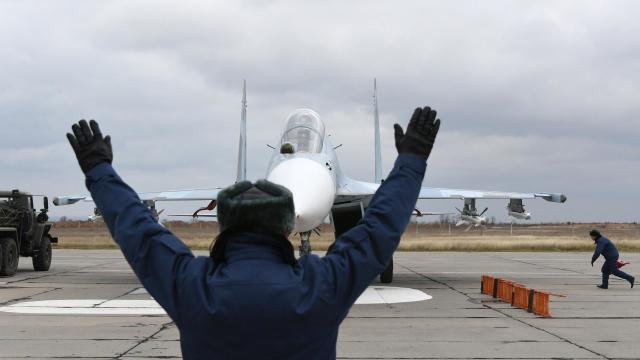In the next four years, the army will receive more than 400 new and upgraded aircraft and helicopters
In 2020, several multibillion-dollar contracts for the serial production of combat aircraft and helicopters were completed. But the state's financial difficulties related to the pandemic have made adjustments to the defense department's plans and forced it to postpone some contracts. Nevertheless, in the coming years, the Aerospace Forces will receive hundreds of new aircraft. Several promising airline complexes will also be tested. But the development of transport and special aviation lags behind, the vast majority of aircraft for it were produced in the last century. What are the immediate and long-term prospects of Russian manned military aviation, Izvestia analyzed.
Frontline contracts
For the second year, there has been a noticeable decrease in the number of new combat aircraft delivered to the operational and tactical aviation. This is due to the successful completion of a number of long-term contracts. In 2020, the troops received the last Su-35S fighters under the contract of 2015 and Su-34 bombers, contracted in 2012.
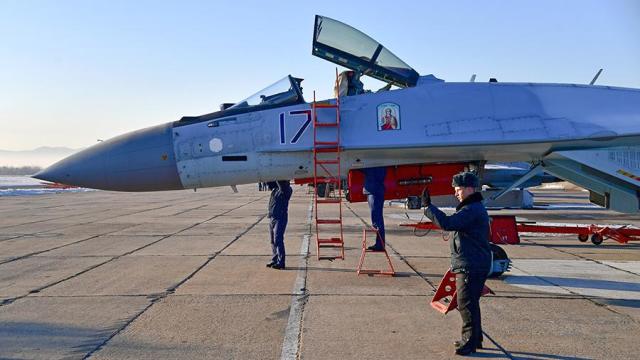
Employees of the Engineering and Aviation Service of the Russian Aerospace Forces during the preparation for the flight of the Su-35S fighter at the Central Angular military airfield in Primorsky Krai
Image source: Photo: TASS/Yuri Smityuk
In the next four years, the Armed Forces will add more than 400 new and upgraded aircraft and helicopters. The main part of them will be already familiar models of the fourth generation. At the Army 2020 forum, the Defense Ministry announced new contracts for Su-34 bombers, Su-35, Su-30SM2 fighters and Yak-130 combat training aircraft. The exact parameters of the contracts and the number of cars are not announced. According to unofficial data, these are small short-term contracts for two to four dozen boards. There is no doubt that the industry will be able to fulfill them in the very next few years.
After a one-year pause due to an accident in December 2019, the first serial fifth-generation Su-57 fighter was handed over to the troops for testing. By 2028, 76 vehicles should be produced, which will allow three combat regiments to be fully equipped with breakthrough equipment. It will not be easy to implement these plans. It is planned to achieve high production rates only after 2024, when the Su-57 "second stage" will be developed with new powerful engines, improved avionics and an expanded set of weapons.
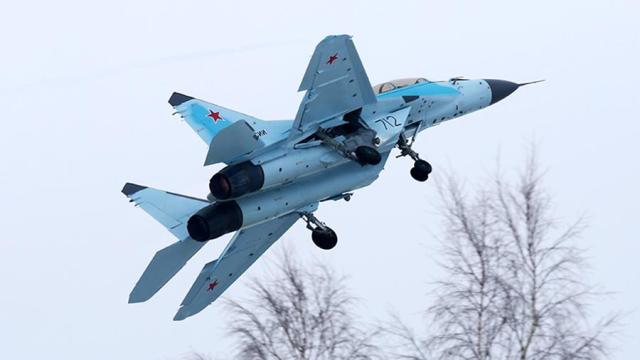
Multi-purpose fighter MiG-35 during a demonstration flight on the territory of the production complex of the Russian Aircraft Corporation "MiG" in Lukhovitsy
Image source: Photo: TASS/Marina Lystseva
In the family of fighters, it is difficult to advance the project of the new MiG-35. Their state tests have not yet been completed, which does not allow us to proceed to the serial purchase of these light fighters, which should replace the MiG-29. The fate of the MiG-31 heavy interceptors is more successful. Restoration of their production is not expected, but about a hundred cars have been repaired with modernization to the modern level of the MiG-31BM and will serve in the 2030s. Some of them have already received hypersonic missiles "Dagger". It is expected to develop other air complexes based on the honored aircraft, including anti-satellite and ultra–long-range air-to-air missiles.
"The turning point for our aviation was participation in the Syrian operation," military expert Vladislav Shurygin told Izvestia. - There in business checked both new, and old models of equipment, arms, tactics of actions. And judging by official statements, they found flaws even in the samples that were only recently adopted. Monitoring of the Nagorno-Karabakh conflict will require additional changes to the plans. For sure, the balance between manned and unmanned aircraft will be revised in the VKS.
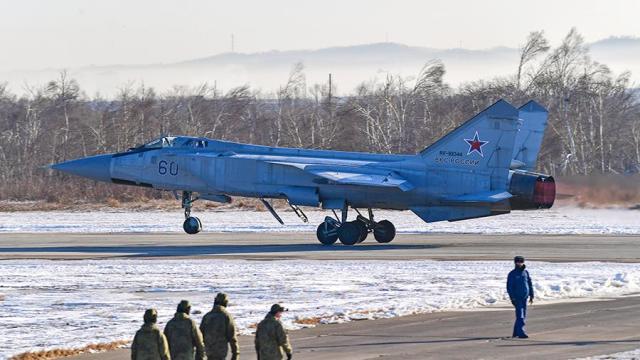
Fighter-interceptor MiG-31BM at the military airfield Central Corner in Primorsky Krai
Image source: Photo: TASS/Yuri Smityuk
According to the results of military operations in the SAR, the Ministry of Defense initiated about a dozen modernization programs of aircraft and determined the requirements for promising aviation complexes. For example, for combat helicopters, the main one was to increase the range of weapons, the expert noted.
Strategic objectives
Modernizing strategic aviation and turning it into a powerful non-nuclear strike force has become a priority after it performed well in combat operations against extremists in Syria. Therefore, in the next decade, long-range aviation will grow not only qualitatively, but also quantitatively.
Programs have already been launched to improve the types of aircraft that are currently in service. They will be brought to the level of Tu-22M3M, Tu-95MSM and Tu-160M. But the most important of the projects was the revival of serial production of "White Swans" under the new index Tu-160M2. In total, it is planned to receive 50 missile carriers of this type by 2030.
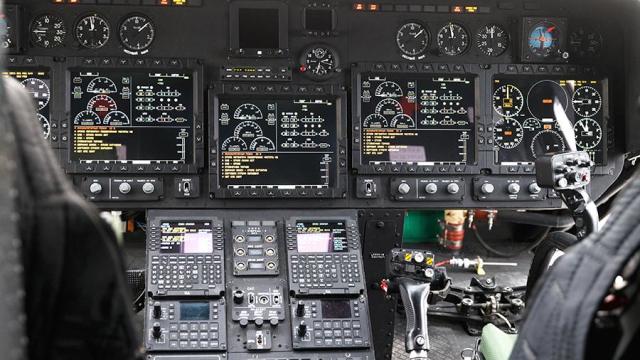
Instrument panel of the Tu-160M2 strategic bomber on the territory of the Kazan Aviation Plant-a branch of the Tupolev PJSC enterprise»
Image source: Photo: TASS/Vadim Savitsky
In the longer term, the old versions of the "strategists" will be replaced by a new long — range aviation complex-PAK DA. Now the beginning of preliminary tests of experienced four-seat stealth bombers is scheduled for April 2023, and the state-for February 2026.
In parallel, the development of new ammunition for strategic missile carriers is also underway. In the coming years, all of them-from the Tu-22M3 to the promising PAK DA-will receive more long-range and high-speed missiles. Some of them will probably be hypersonic.
Helicopter Renaissance
Over the past years, most army aviation units have been re-equipped with new transport and combat helicopters. Now, more than 200 new Mi-28N and Ka-52s are a much more frequent sight in the sky and on exercises than the old Mi-24 Crocodiles and their upgraded Mi-35M variants.
In 2021, a new generation of Russian attack helicopters will go into the series — better armed, more "sharp-sighted" and protected. The first serial Mi-28NM from the order for 98 units are already being delivered to the troops. Tests of the upgraded Ka-52M began in 2020. The Ministry of Defense announced plans to sign a contract for more than a hundred such vehicles.
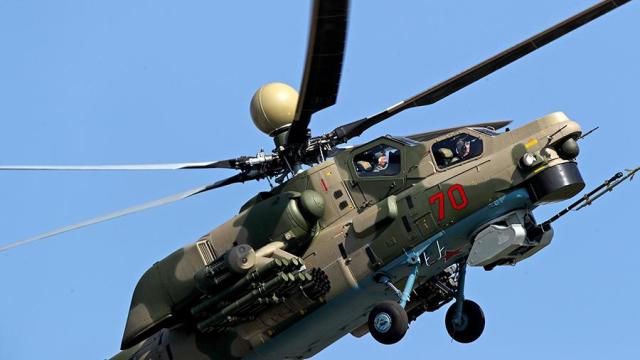
Mi-28NM attack helicopter at the International Aviation and Space Salon MAKS-2019 in Zhukovsky
Image source: Photo: TASS/Sergey Bobylev
Well-established production of modern versions of the Mi-8 allowed to saturate hundreds of new machines helicopter parts. This made it possible to raise the issue of the formation of additional brigades of army aviation, which will be designed to act together with the Airborne Forces.
To do this, the creation of a new "flying BMP" for paratroopers and special forces is rapidly progressing. The prototype Mi-8AMTSh-VN "Sapsan" began testing in the year ended. It is distinguished from conventional transport and combat vehicles by stronger weapons. The car was equipped not only with additional machine guns and the ability to use bombs — it will also be possible to hang long-range guided missiles that can hit a tank or building for 15 km. For the first time, the landing bay will be protected by armor from small arms fire from the ground.
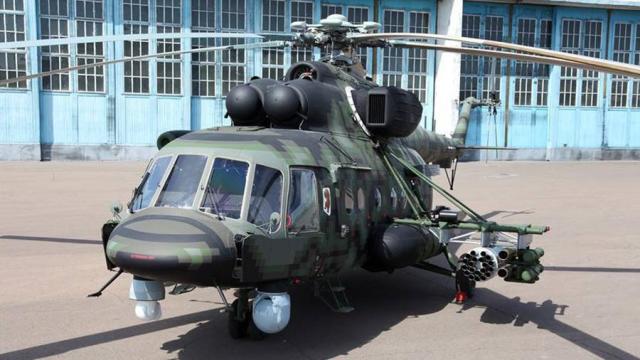
Prototype of the Mi-8AMTSH-VN "Sapsan»
Image source: Photo: Russian Helicopters
The first such vehicles were developed in the interests of special operations forces. But in December, Deputy Defense Minister Alexey Krivoruchko said that they will be equipped with airmobile units of the Airborne Forces of a new type, which will be given part of the first ten ordered "Peregrine Falcons".
Transport problems
Against the background of success in the modernization of combat aircraft and helicopters, the development of transport and special aviation looks weak. In terms of the share of new equipment, it is far behind. The vast majority of aircraft were produced in the last century.
"Without military transport aircraft, it is difficult to imagine a Russian operation in Syria or in Nagorno-Karabakh," military historian Dmitry Boltenkov told Izvestia. — There is no alternative to it for the rapid transfer of peacekeepers abroad and for the fulfillment of our allied obligations. Yes, and in the internal army transportation in our vast country, you can not do without it.
| jpg"> |
| IL-76MD-90A transport aircraft at the Aviastar-SP aircraft manufacturing plant in Ulyanovsk. |
| Source: Photo: TASS/Marina Lystseva |
Special purpose aircraft are critically needed for the army's combat capability. These are air tankers, equipment for reconnaissance and electronic warfare, anti-submarine vehicles, and air control points for the high command. It is impossible to maintain the Soviet legacy indefinitely, says Dmitry Boltenkov.
The United Aircraft Corporation (UAC) has not yet managed to establish serial production of new machines for this purpose. The project for the production of the main medium transport vehicle for the troops — the upgraded IL-76MD-90A-was the most advanced. But the timing of their release is constantly lagging behind the stated ones. Nevertheless, this did not prevent the Ministry of Defense in December to sign an additional large contract for the production of ten units in the version of the IL-78M-90A air tanker
Research has progressed to determine the appearance of a heavier VTA aircraft — a promising military transport aviation complex. In the coming year, it is planned to start development work and build a prototype machine capable of carrying 80 tons of cargo per 5 thousand km. But before the first take-off, and even more so the mass production of this replacement AN-124 will take many years.
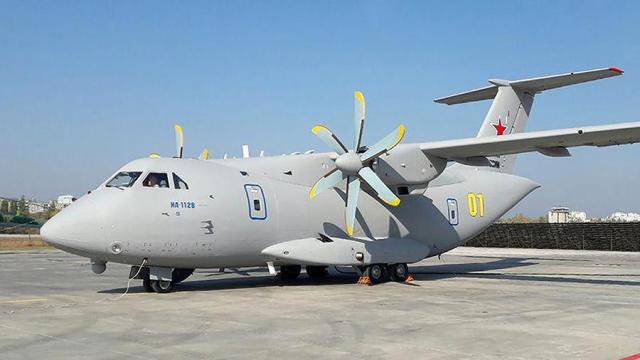
Military transport aircraft IL-112B at the airport of the Voronezh Joint-Stock Aircraft Company
Image source: Photo: TASS/Elena Ruzanova
The light military IL-112B is still far from ready. It should replace dozens of AN-26s by the early 2030s, the life of which is coming to an end. But due to the complication of relations with Ukraine, cooperation on the AN-140 and AN-148 stopped. The prospects for the medium multi-purpose transport aircraft, known under the designation MTS and IL-214, are even dimmer.
In 2020, the UAC leadership made major structural changes and rearrangements in its transport aviation division. It is stated that this will help to improve the situation with key projects and establish serial production of aircraft of this type for the Ministry of Defense and for export.
Anton Lavrov
